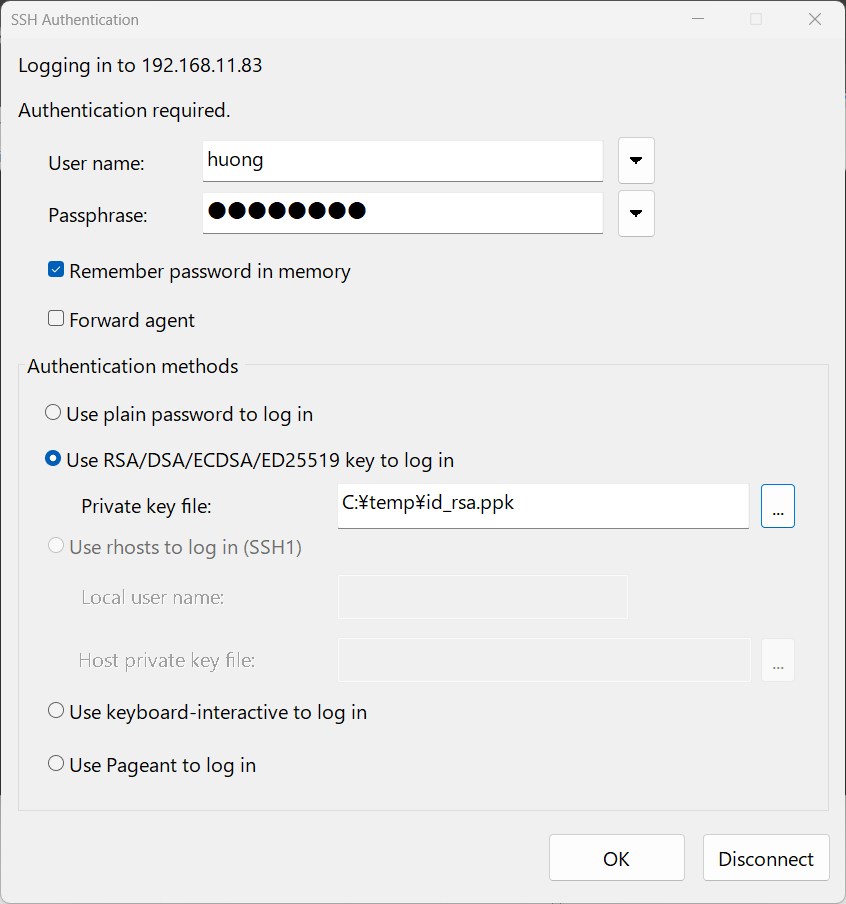Contents
Creation of public and private key pairs
Create a public/private key pair for a user connecting to the Linux server using OpenSSH.
Use ssh-keygen to create key pairs.
Creation of public/private key pairs is performed with remote login user privileges.
If you do not specify the destination and file name, id_rsa and id_rsa.pub will be created in /home/(user name)/.ssh/. On the way, enter the password for the key.
|
1 2 3 4 5 6 7 8 9 10 11 12 13 14 15 16 17 18 19 20 21 22 23 |
# su - huong [huong@rocky~]$ /usr/bin/ssh-keygen -t rsa Generating public/private rsa key pair. Enter file in which to save the key (/home/huong/.ssh/id_rsa): [Enter] Created directory '/home/huong/.ssh'. Enter passphrase (empty for no passphrase): Password Enter same passphrase again: Again Password Your identification has been saved in /home/huong/.ssh/id_rsa. Your public key has been saved in /home/huong/.ssh/id_rsa.pub. The key fingerprint is: SHA256:/s3sLJJXH+7Ul01UDQplwwd/PkzQ6fqn7OmEWCen/6g huong@rocky The key's randomart image is: +---[RSA 3072]----+ | .o=oo.+| | o.+ooo| | ..o.o| | o= | | S o +oo| | . o.B.o+| | ....oo+o+| | o.o= =o+o| | o.oE=Xoo| +----[SHA256]-----+ |
|
1 |
$ cat ~/.ssh/id_rsa.pub >> ~/.ssh/authorized_keys |
|
1 2 |
$ chmod 600 ~/.ssh/authorized_keys $ chmod 700 ~/.ssh |
Save the created private key id_rsa to an appropriate location on windows using winSCP.
Start Winscp and click "New Session"
Host name : Server IP Address
Port number : SSH Port
User name : Server Login User
Password : Password for the same user
and then "Save".
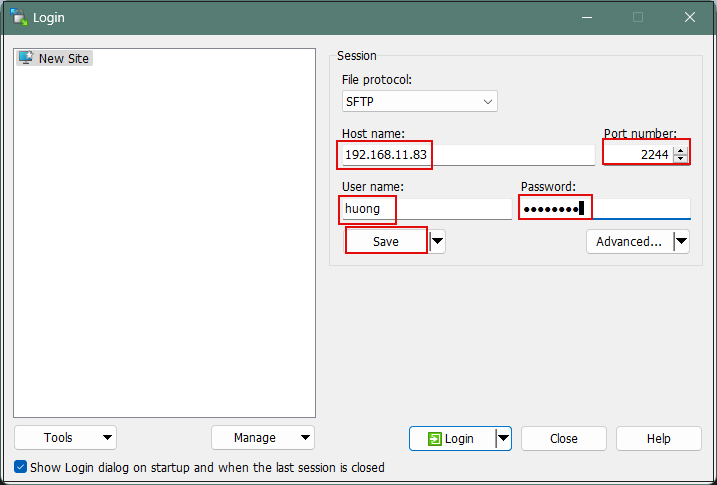
Site name : Any name
Click "OK"
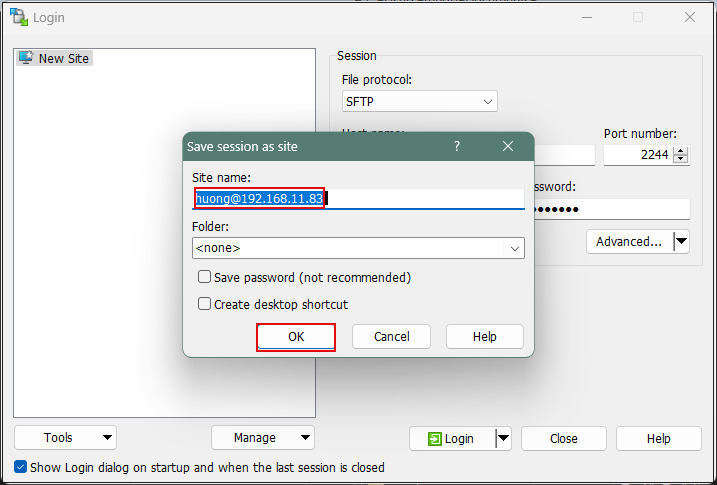
After confirming the server, click "Login".
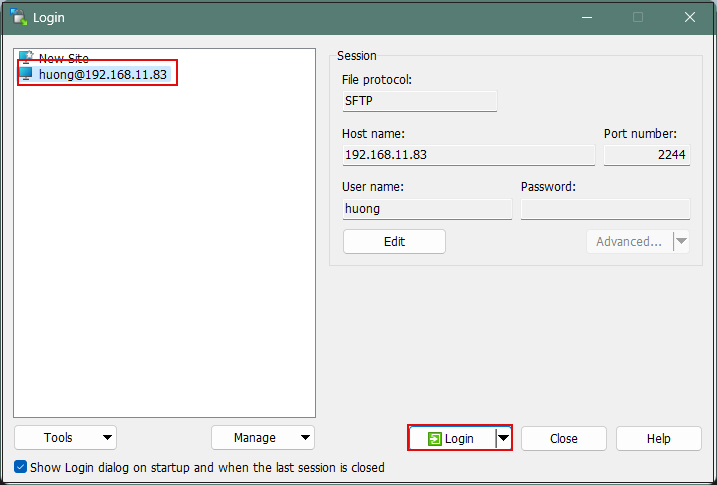
Click "Update" when the following screen appears
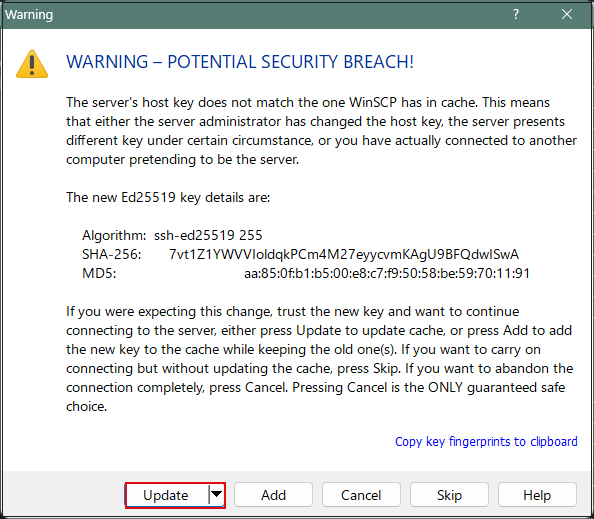
Password of the logged-in user in the Password field
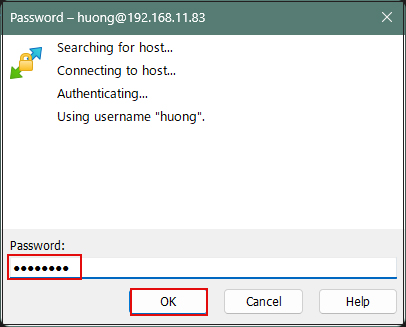
When connected, the left column is the server side and the right column is the PC (Windows) side.
Save the file "id_rsa" under /home/huong/.ssh on the server side to an appropriate location on Windows in the right column.
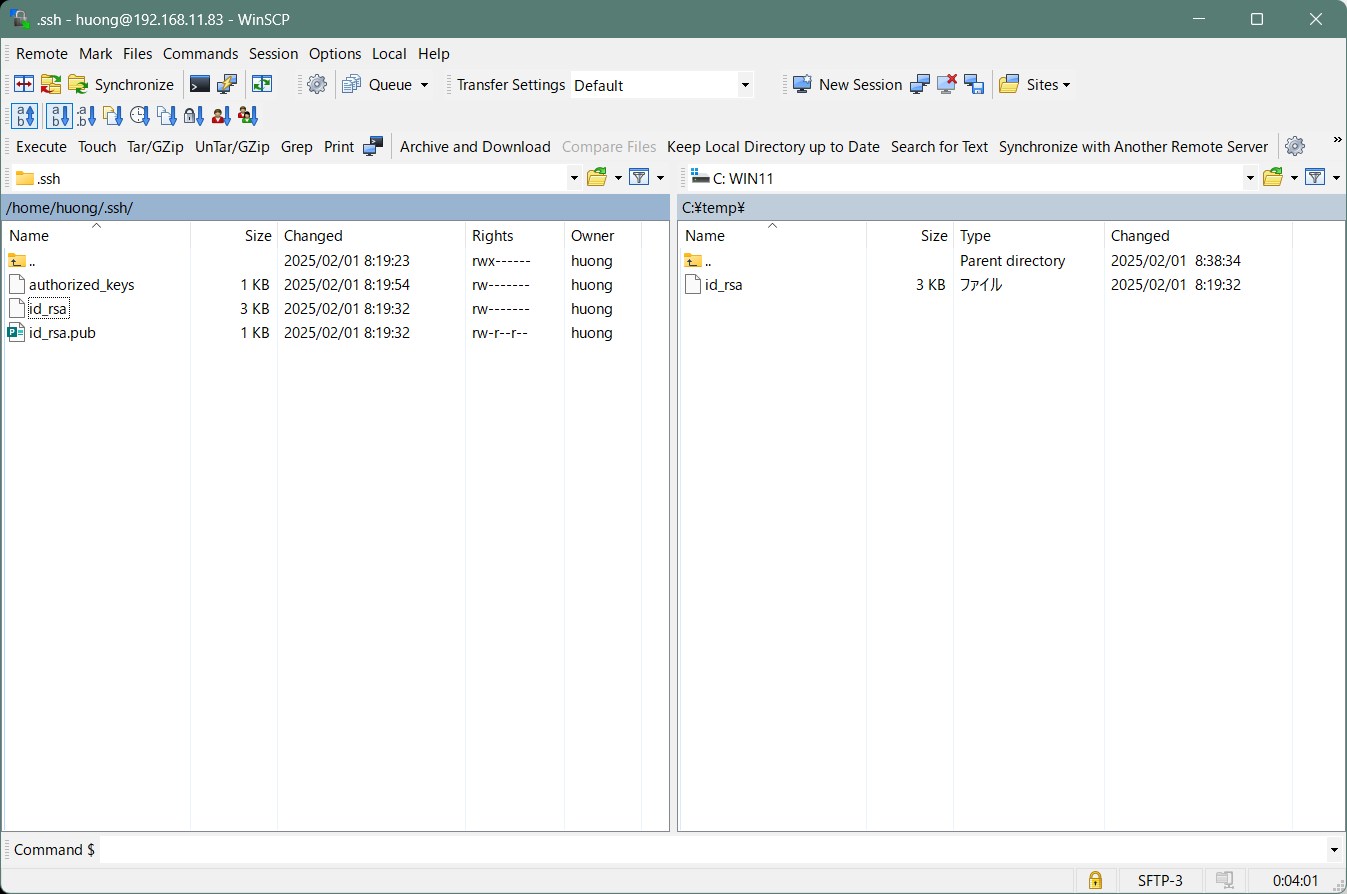
Edit SSH configuration file
Edit the SSH configuration file to disable password authentication.
This time, instead of being an ordinary user, su - to become root.
|
1 2 3 4 5 6 7 |
$ su - Password: # vi /etc/ssh/sshd_config # Line 71 : Change to password authentication disabled PasswordAuthentication no # systemctl restart sshd |
How to connect with Tera Term
Start Tera Term, and select "File" menu "New connection"
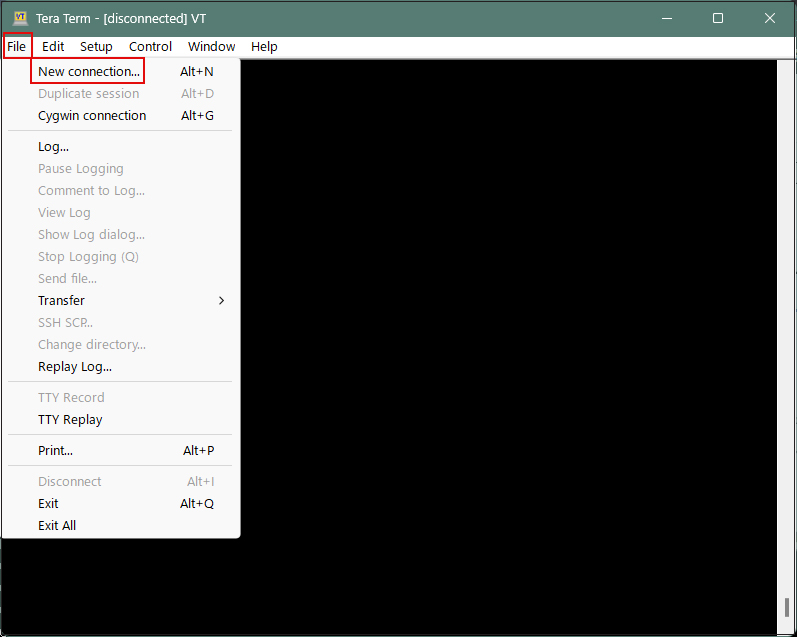
Host : Server IP Address
TCP port : SSH Port number
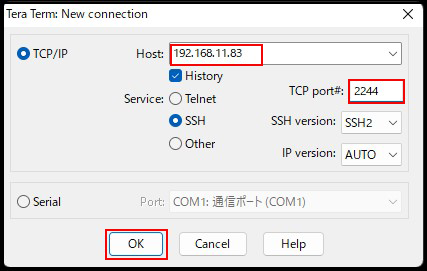
If you get the following security warning "Replace...." and click "Continue".
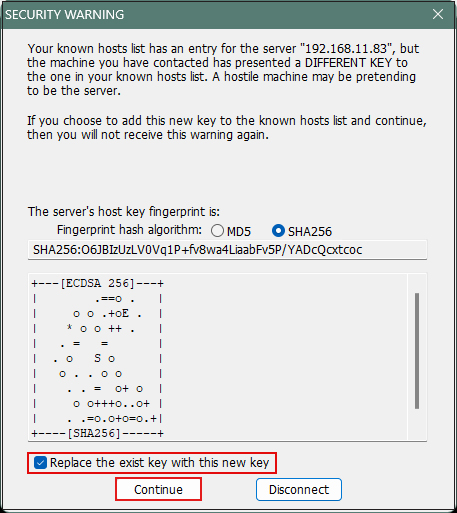
User name : Login User Name
Password : Password specified in the creation of a public/private key pair
Under "Use RSA/DSA/ECDSA/ED25519 key to log in", set "Private key file:" to "id_rsa" that you just saved in Windows. and click "OK".
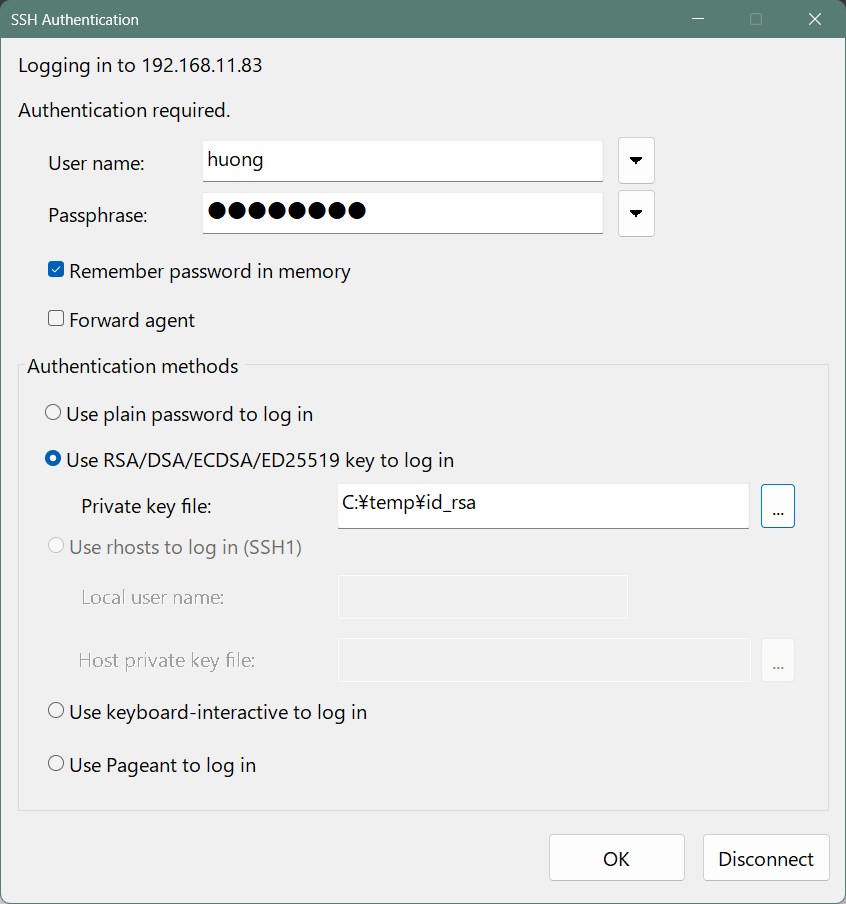
Creating a private key using PuTTYgen
Start Winscp, select the appropriate server, and run Puttygen from "Tools".
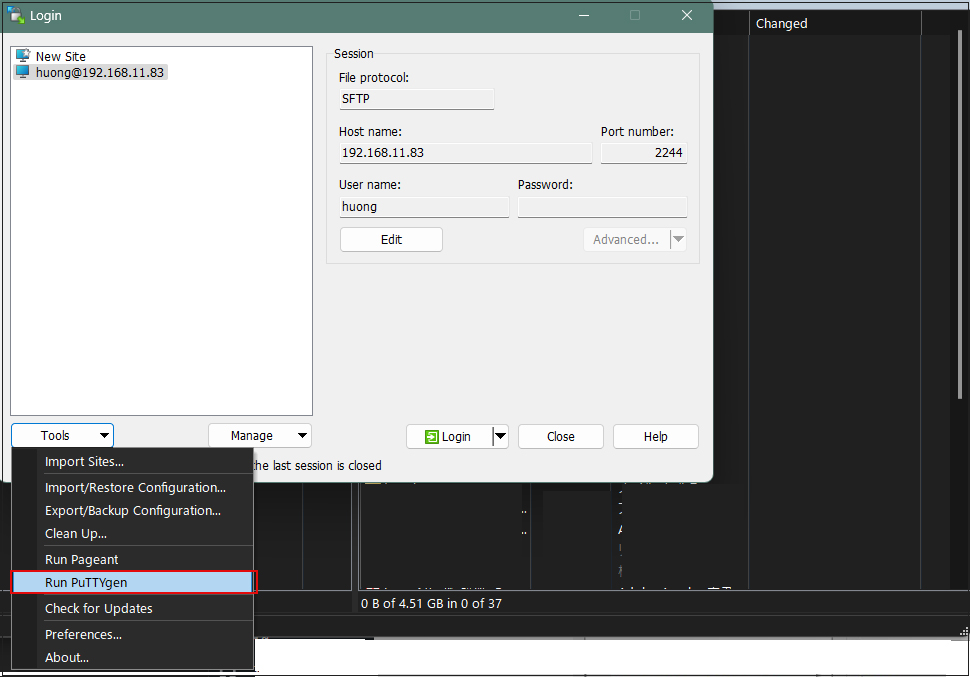
Click "Load"
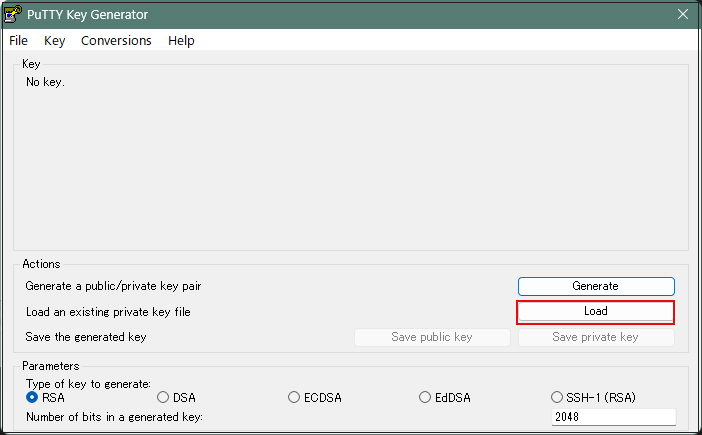
Change the file type to [ All Files (*. *)] to read the private key id_rsa transferred from the Linux server.
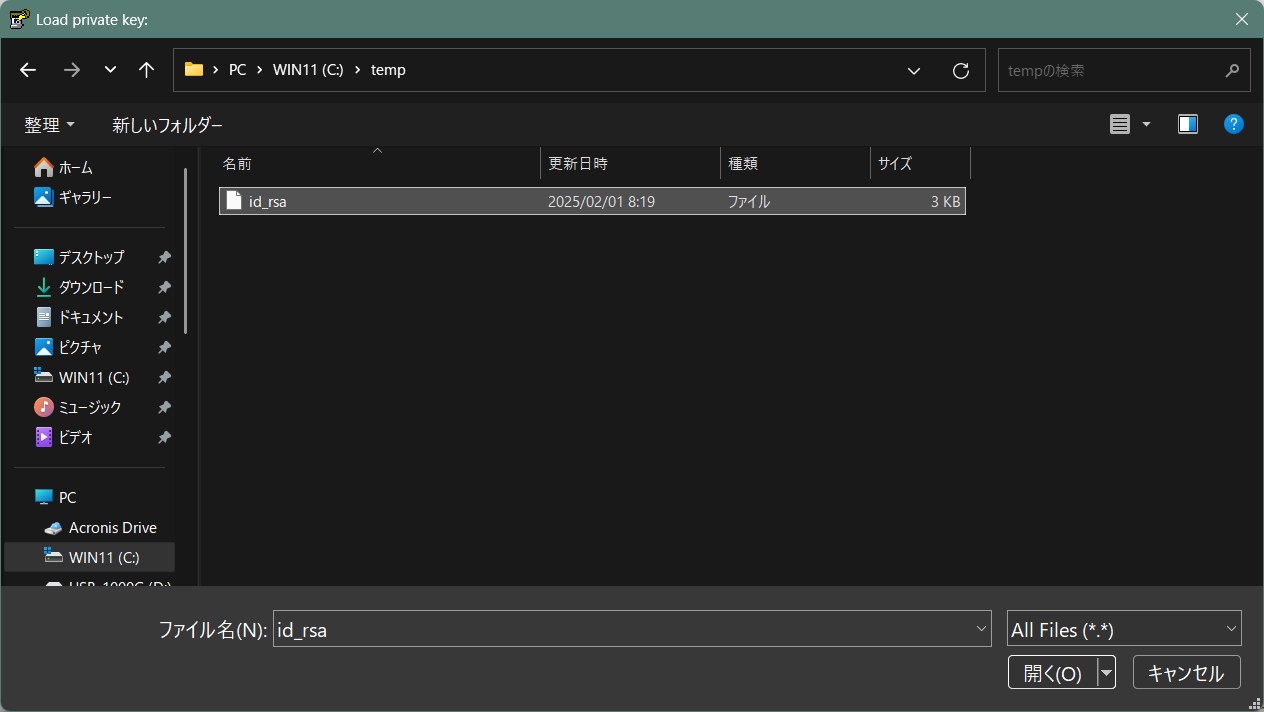
The password is the password set in "Creating a public and private key pair" above
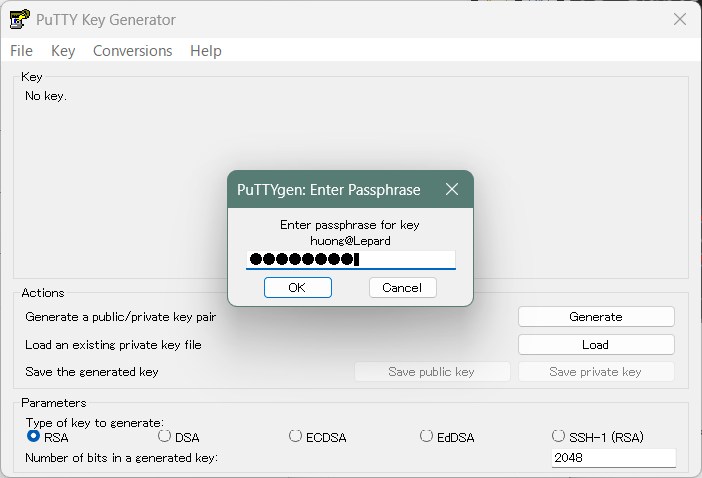
Click on "Save private key"
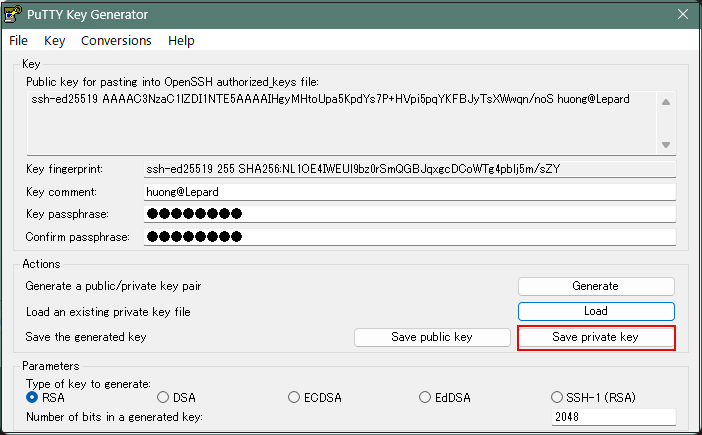
Save the file with the extension ".ppk" in the same place as "id_rsa" saved earlier on the Windows side under the name "id_rsa.ppk".
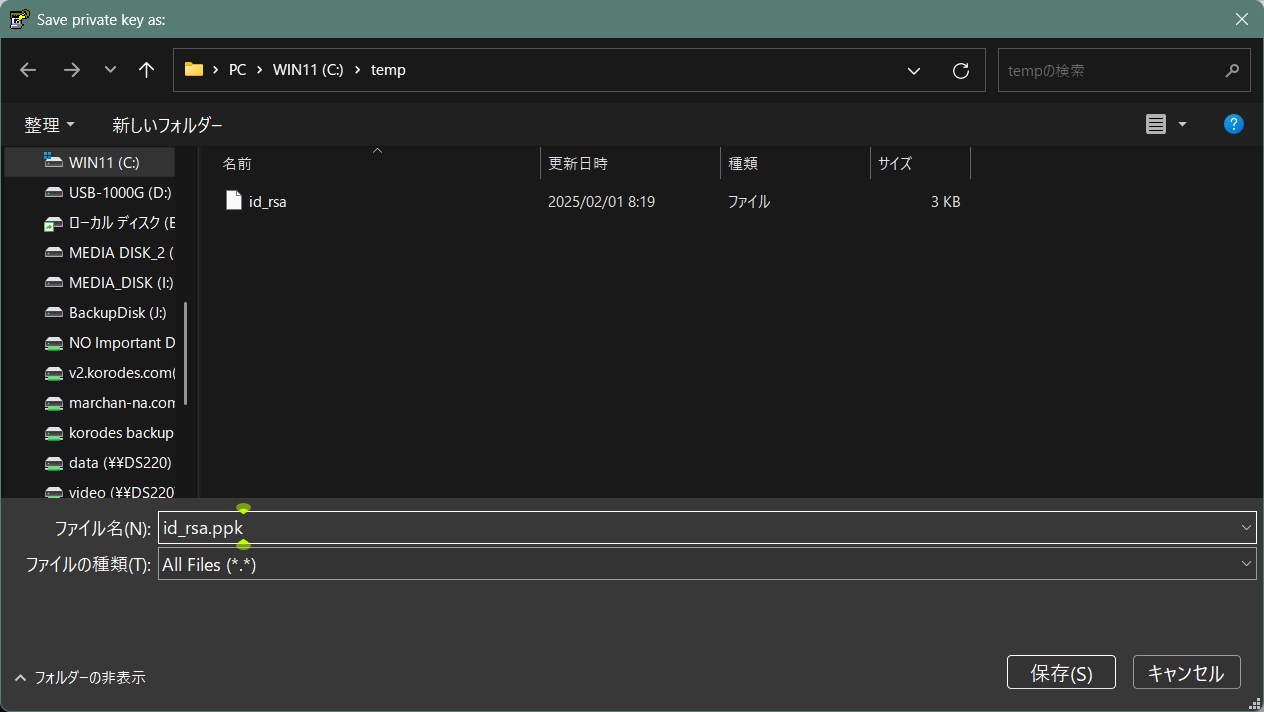
Select the appropriate server and click "Edit"
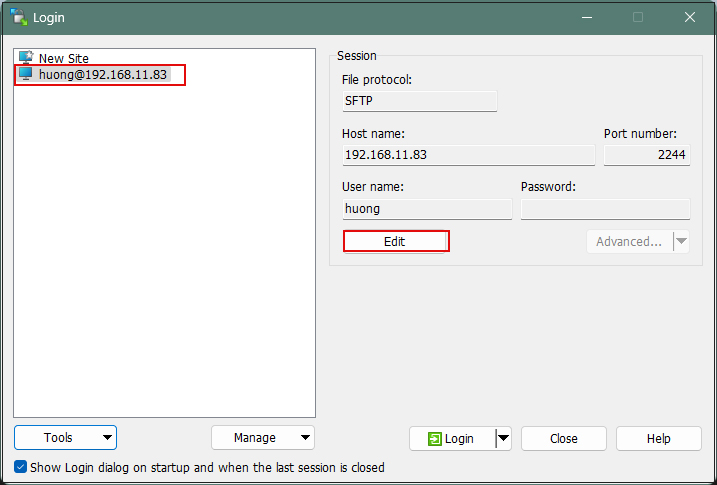
Click on "Advanced"
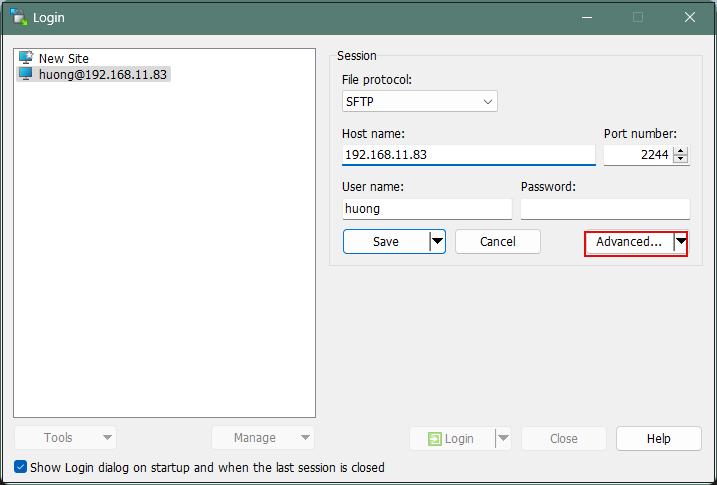
Open the "Authentication" menu and specify "id_rsa.ppk" saved in Windows for "Private key file"
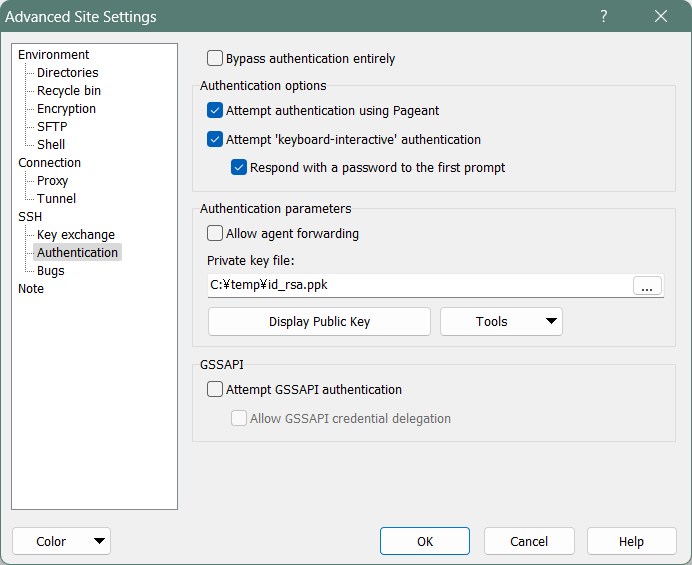
Click "Save"
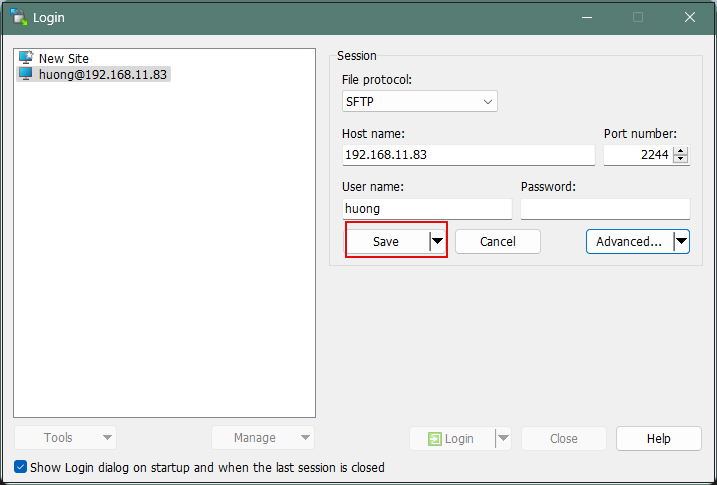
Click on "Login"
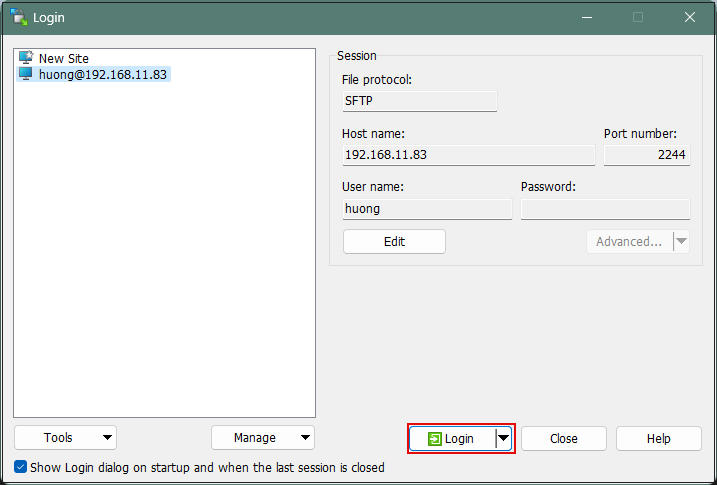
The password is the password set in "Creating a public and private key pair" above
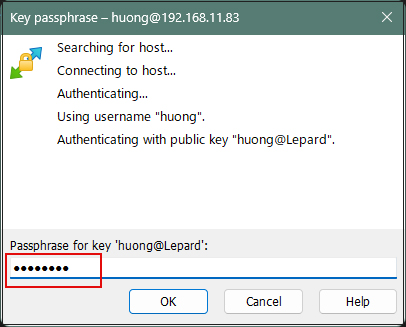
When connecting with Tera Term
Use RSA/DSA/ECDSA/..." Specify "id_rsa.ppk" saved in windows in the "id_rsa.ppk" field.
